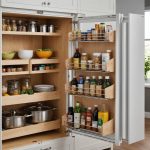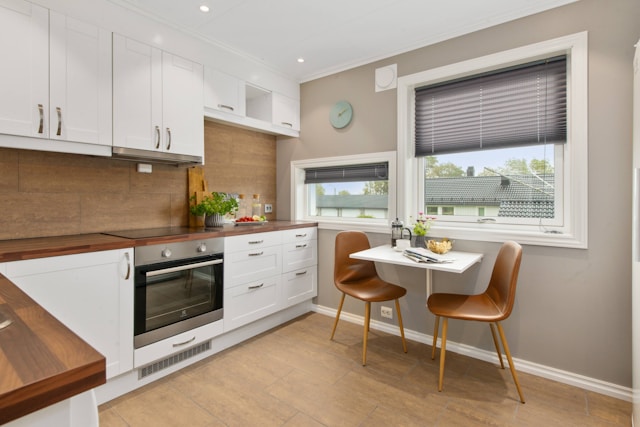Choosing the right colors for your kitchen is more than just a design decision; it can set the tone for your entire home. Harmonious hues can create a cohesive aesthetic that reflects your personal style. Whether you lean towards bold statements or soft palettes, the right color scheme can enhance your space and promote a sense of tranquility. This guide will help you explore ways to blend style with functionality while considering your home’s unique vibe. Transform your kitchen into a harmonious haven.
Understanding Color Theory in Kitchen Design
Colour theory is a fundamental concept in kitchen design that helps create visually appealing and harmonious spaces. At its core, colour theory involves using a colour wheel to understand the relationships between colours. The colour wheel is a tool that designers use to select kitchen colours that complement each other, ensuring a balanced and cohesive look.
Additional reading : Finding the Ideal Bar Stool Height for Your Kitchen Island: A Complete Guide
Colour harmony is crucial in kitchen design as it ensures that the chosen colours work well together, enhancing the space’s overall aesthetic. Harmony can be achieved by selecting colours that are adjacent on the colour wheel, known as analogous colours, or by choosing complementary colours, which are opposite each other on the wheel. This balance prevents clashing and creates a pleasing visual flow.
Contrast is another important aspect of colour theory in kitchen design. It involves using light and dark shades or warm and cool tones to highlight specific areas or features in the kitchen. By understanding and applying these principles, designers can craft spaces that are not only functional but also inviting and visually engaging.
In the same genre : Crafting a Multi-Sensory Kitchen: A Guide for Designing Inclusive Spaces for the Visually Impaired
Incorporating these kitchen design principles ensures that the space is both aesthetically pleasing and practical, meeting the needs of those who use it daily.
Exploring Harmonious Color Palettes
Selecting the right kitchen color palettes can transform a cooking space into a haven of style and comfort. Popular harmonious color palettes often include neutral tones like beige, grey, and white, which serve as a versatile backdrop. These colors can be paired with vibrant hues like teal, mustard, or navy for a pop of personality. Such combinations not only enhance the visual appeal but also bring a sense of balance and cohesion to the kitchen.
Visual inspiration can be drawn from images showcasing successful color combinations. For instance, a kitchen with soft grey cabinets complemented by a bold teal backsplash creates a dynamic yet harmonious look. Similarly, pairing warm wood tones with crisp white walls can evoke a sense of warmth and cleanliness.
The emotional impact of color choices in kitchen spaces is significant. Warm colors such as red and orange can stimulate appetite and encourage social interaction, making them ideal for family kitchens. In contrast, cool colors like blue and green can promote calmness and relaxation, perfect for a serene cooking environment. By understanding the emotional responses elicited by different colors, one can craft a kitchen that not only looks good but also feels right.
Choosing Colors for Different Kitchen Styles
Selecting the right colours for various kitchen styles can significantly impact the overall aesthetic and functionality of the space. Different styles call for distinct colour palettes that enhance their unique characteristics.
Modern Kitchens
Modern kitchen colors often feature sleek and minimalist tones. Think of whites, greys, and blacks, which provide a clean and sophisticated look. These colours can be complemented by metallic accents, such as stainless steel appliances, to enhance the contemporary feel. Incorporating bold colours, like red or blue, as accent pieces can add a pop of personality without overwhelming the space.
Rustic Kitchens
For rustic kitchen colors, earthy tones are key. Warm shades like terracotta, deep greens, and browns evoke a sense of nature and comfort. These colours pair well with natural materials like wood and stone, creating a cosy and inviting atmosphere. Adding vintage or distressed finishes can further enhance the rustic charm.
Traditional Kitchens
In traditional kitchens, classic colours such as cream, soft yellow, and muted blues are prevalent. These tones offer a timeless appeal and can be accented with darker shades for depth. Incorporating ornate details and rich wood finishes can elevate the elegance and warmth of a traditional kitchen.
Practical Tips for Selecting Kitchen Colors
When selecting kitchen colors, it’s essential to consider both paint selection and material choices. The kitchen environment requires durable and easy-to-clean finishes. For walls, opt for semi-gloss or satin paints, which resist moisture and stains. Cabinets benefit from a high-gloss finish, adding a sleek, modern touch while being easy to wipe down.
Using color swatches is a crucial step in the selection process. Test swatches in various lighting conditions to see how colors change throughout the day. Natural light can make colors appear different than artificial lighting, so it’s important to view swatches in the kitchen’s actual setting.
Coordinating colors with appliances and cabinetry can enhance the kitchen’s overall aesthetic. Consider the existing elements in your kitchen, such as stainless steel appliances or wooden cabinets. Choose colors that complement these materials, creating a cohesive look. For instance, a warm grey paint can harmonize beautifully with cool-toned stainless steel, while a soft cream may accentuate rich wooden cabinetry.
Material choices also play a significant role in the kitchen’s color scheme. Incorporate natural elements like stone or wood to add texture and depth. By carefully selecting paints, swatches, and materials, you can create a kitchen that is both functional and visually appealing.
Tools and Resources for Color Selection
Selecting the perfect colours for your kitchen can be a daunting task, but with the right color selection tools and resources, it becomes much more manageable. Digital tools and apps are invaluable, offering a virtual palette to experiment with different combinations. Apps like ColorSnap and Palette Cam allow users to visualize colours in real-time, ensuring a harmonious blend in the kitchen.
Online resources and blogs are treasure troves of inspiration and guidance. Websites such as Houzz and Pinterest provide endless ideas and examples of successful kitchen designs. These platforms often feature expert insights and user reviews, helping you make informed decisions about your colour choices.
Expert insights are crucial in navigating the complexities of colour selection. Professionals often advise starting with a neutral base and incorporating bold accents to add character without overwhelming the space. They also highlight common pitfalls, such as overusing dark tones in small kitchens, which can make the space feel cramped.
By leveraging these tools and resources, you can confidently embark on your kitchen design journey, creating a space that is not only functional but also a true reflection of your style and personality.






